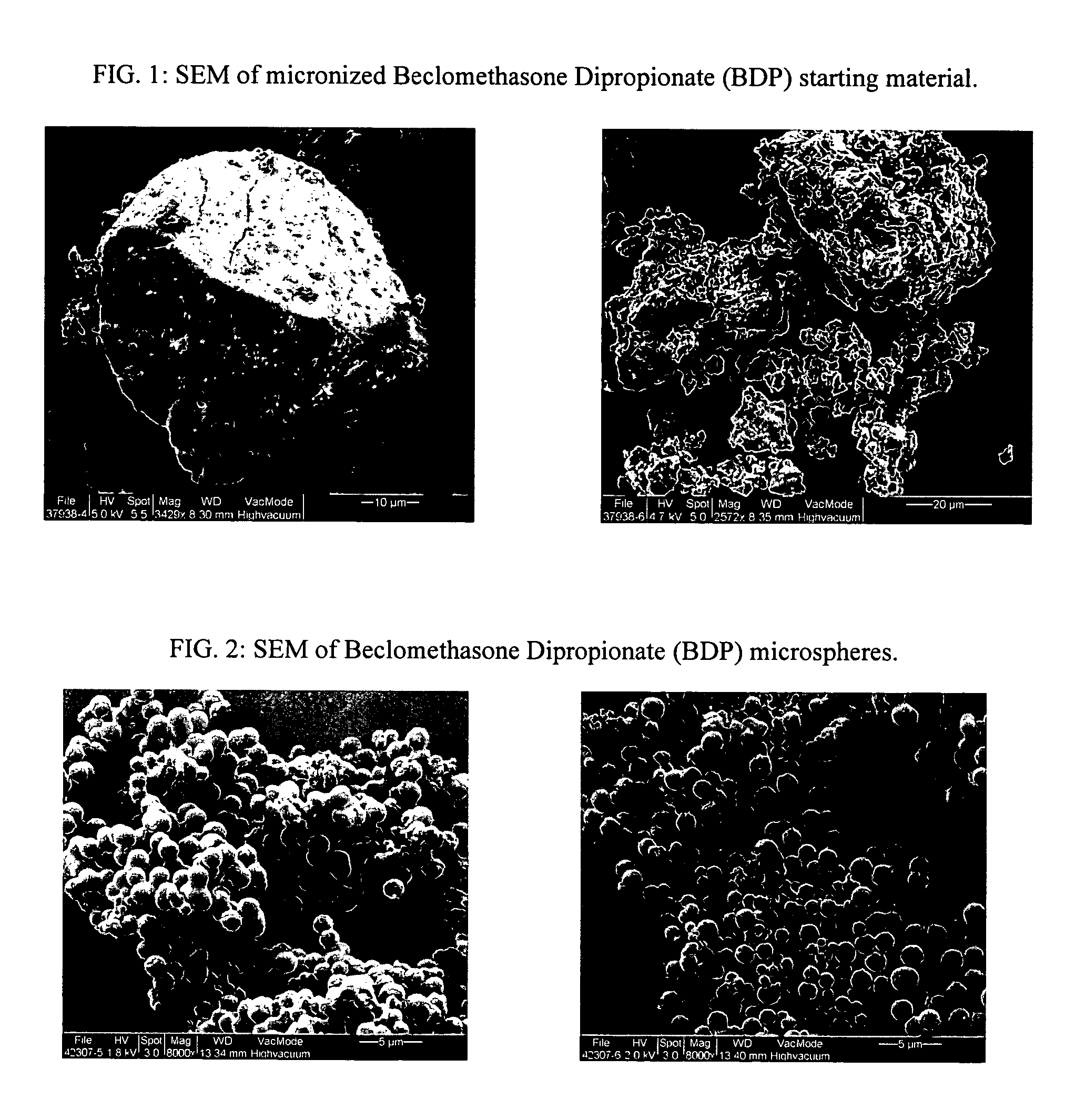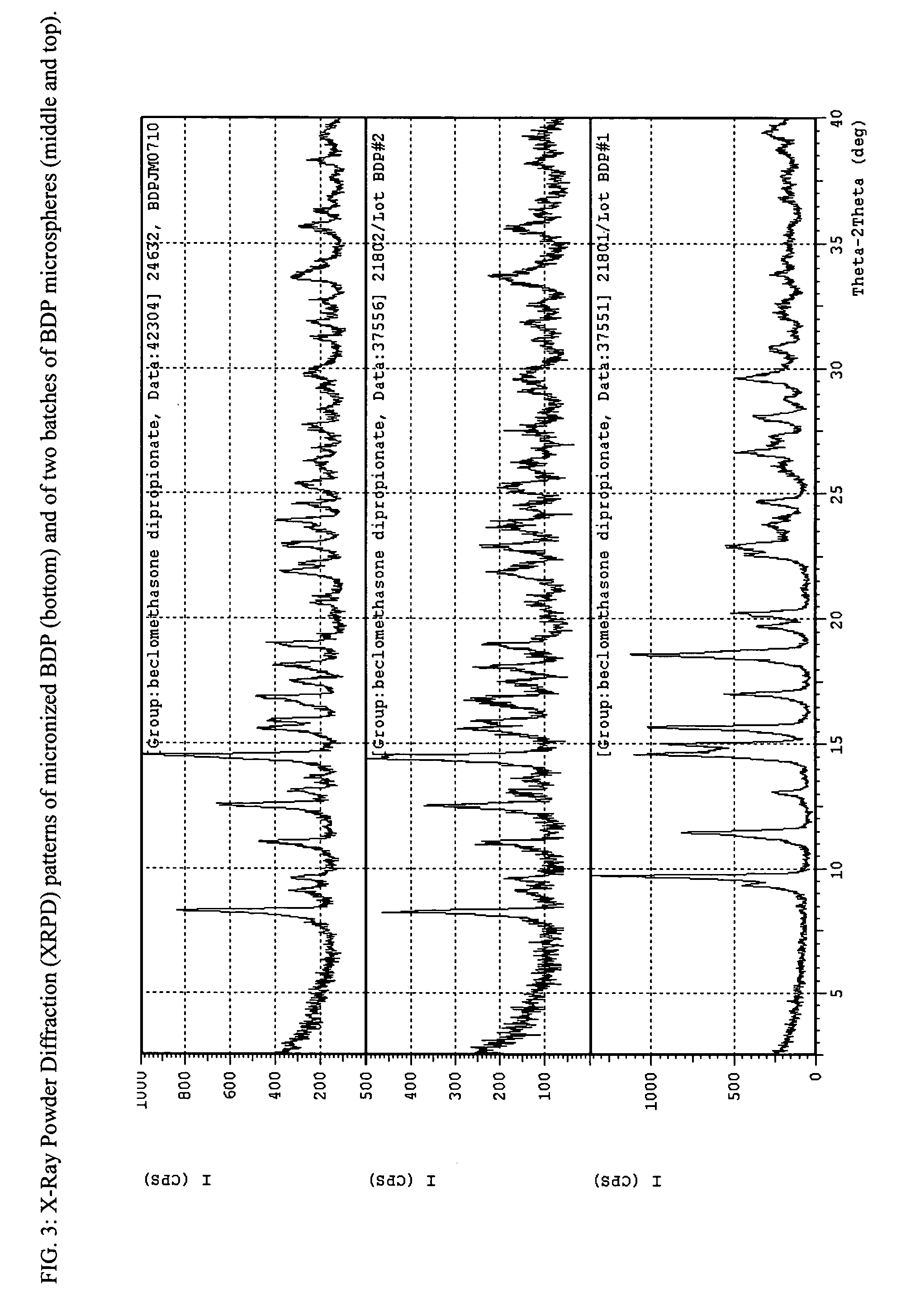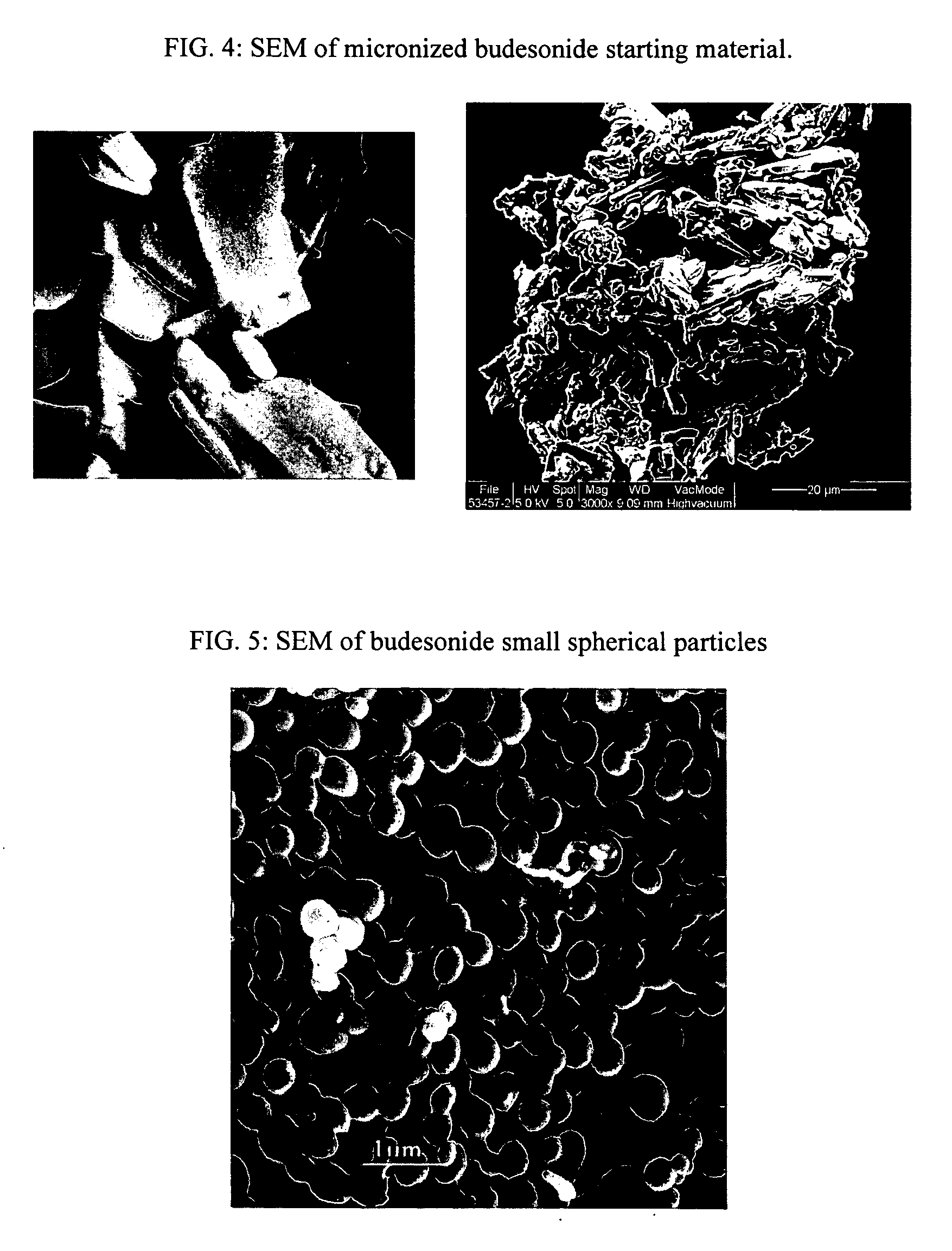Small spherical particles of low molecular weight organic molecules and methods of preparation and use thereof
a technology of organic molecules and small spherical particles, which is applied in the directions of powder delivery, medical preparations, pharmaceutical delivery mechanisms, etc., can solve the problems of high surface area to volume ratio, drug delivery challenges, and high dissolution rate, and achieve uniform size and shape uniform, the effect of increasing the surface area ratio
- Summary
- Abstract
- Description
- Claims
- Application Information
AI Technical Summary
Benefits of technology
Problems solved by technology
Method used
Image
Examples
example 1
[0106] Small Spherical Particles of Beclomethasone Dipropionate (BDP)
[0107] Micronized beclomethasone dipropionate (BDP) USP was weighed and dissolved in ethanol USP to form a 10 mg / ml BDP-ethanol solution. 1.2 ml of the BDP-ethanol solution was mixed with 0.8 ml of deionized water to form a 3:2 vol / vol BDP-ethanol / water solution. The solution was transferred to a 1000 ml round Pyrex® flask of a modified rotary evaporator (modified Rotavapor-R complete, Buchi), and rotated in the flask for a few seconds to form a thin film on the inner surface of the flask. After the thin film was established, a controlled pure nitrogen inflow was allowed to enter the flask at a controlled 65-75 LPM flow rate. As the liquid phase evaporated, the solubility of the drug in the remaining mixed solvent rapidly decreased and a phase separation took place. Precipitation of the drug molecule was observed, as it formed a translucent layer on the surface of the flask. After the drug precipitated, the flask'...
example 2
[0112] Small Spherical Particles of Budesonide
[0113] Micronized budesonide USP was weighed and dissolved in ethanol USP to form 10 mg / ml budesonide-ethanol solution. 1.2 ml of the budesonide-ethanol solution was mixed with 0.8 ml of deionized water, to form a 3:2 vol / vol budesonide-ethanol / water solution. The solution was transferred to a 1000 ml round Pyrex® flask of a modified rotary evaporator (modified Rotavapor-R complete, Buchi), and the process continued as described in Example 1 for small spherical particles comprising BDP.
[0114] Particle morphology for the following examples was obtained using Scanning Electron Microscopy (FEI Quanta 200, Hilsboro, Oreg.). FIG. 4 presents SEM of micronized budesonide starting material and FIG. 5 presents SEM of the resulting budesonide small spherical particles.
[0115] Similar to Example 1, micronized budesonide starting material varies in shape and size and has a broad size distribution of 5-100 microns. Some of the particles are larger ...
example 3
[0118] Small Spherical Particles of Itraconazole
[0119] Micronized itraconazole USP (Wycoff, Inc.) was weighed and a volume of acetone USP was added to form a 10 mg / ml itraconazole-acetone suspension. The suspension was formed in a glass vial with a screw cap to prevent the rapid evaporation of acetone. The sealed vial was vortexed and then inserted into a water bath preheated to 70° C. The vial was left in the bath for 5-10 minutes, which allowed the dissolution of the itraconazole and the formation of an itraconazole-acetone solution. The vial was removed from the 70° C. bath and was left to cool to room temperature. After cooling, 2.48 ml of the itraconazole-acetone solution was mixed with 1.52 ml of a 10% ethanol in deionized water solution to form a 62% itraconazole-acetone / 38% water-ethanol vol / vol solution. The total volume of the itraconazole-acetone / water-ethanol solution was 4 ml. The solution was transferred to a 1000 ml round Pyrex® flask of a modified rotary evaporator ...
PUM
 Login to View More
Login to View More Abstract
Description
Claims
Application Information
 Login to View More
Login to View More - R&D
- Intellectual Property
- Life Sciences
- Materials
- Tech Scout
- Unparalleled Data Quality
- Higher Quality Content
- 60% Fewer Hallucinations
Browse by: Latest US Patents, China's latest patents, Technical Efficacy Thesaurus, Application Domain, Technology Topic, Popular Technical Reports.
© 2025 PatSnap. All rights reserved.Legal|Privacy policy|Modern Slavery Act Transparency Statement|Sitemap|About US| Contact US: help@patsnap.com



